24 March 2023
Can industry fix a launch bottleneck, and what next for lunar exploration? - Space News Roundup
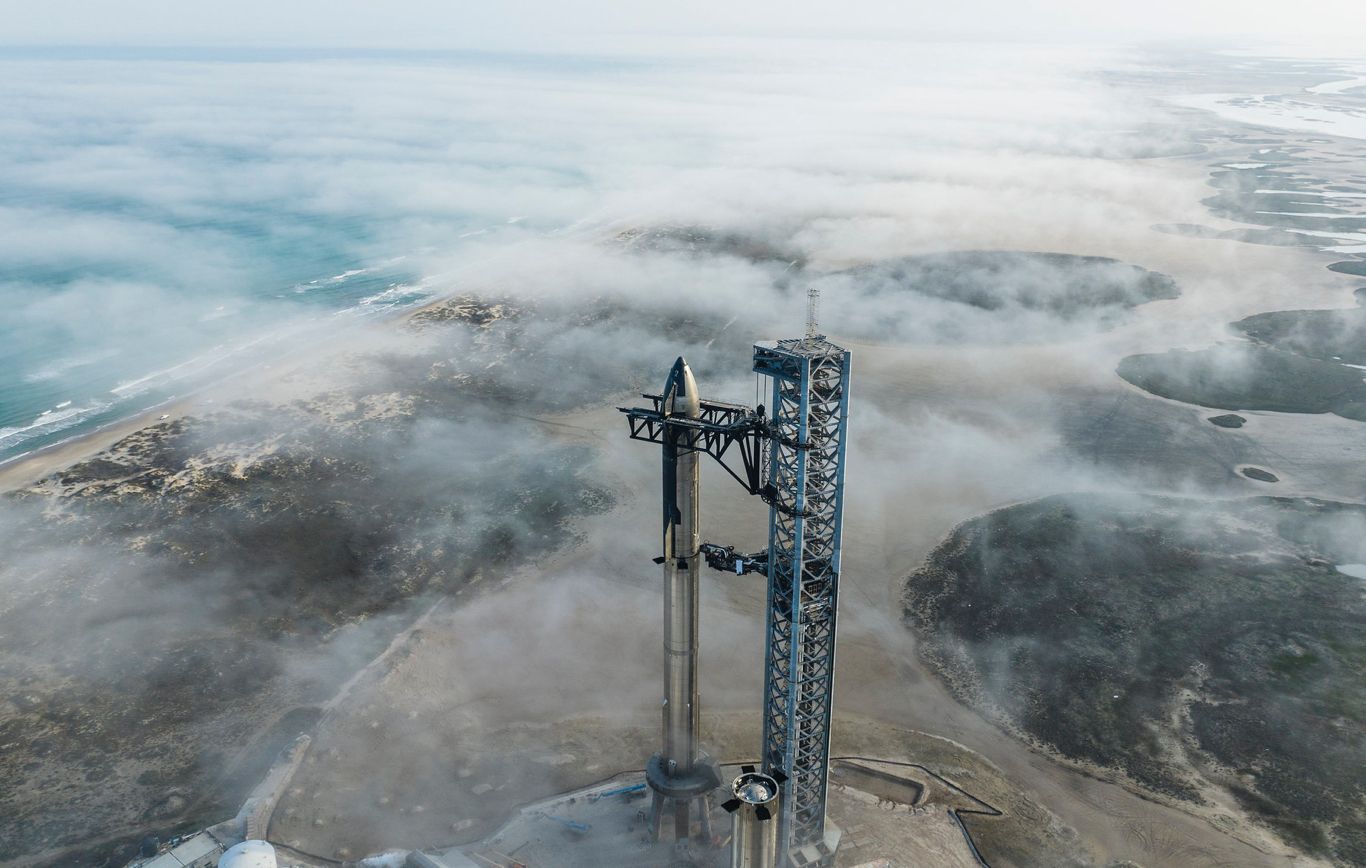
Can Starship help fix the launch bottleneck? (Image: SpaceX)
It’s rarely a quiet week in the space industry, and this one has been no different, as the world continues to wake up to the possibilities of New Space. There is growing demand in the launch market, but also concerns about how that demand will be met. Also, there are signs of continued and growing interest in sustained lunar exploration, not only from established space nations, but also new players such as the UK and UAE. The New Space economy is expanding all the time.
India and Taiwan have taken steps towards jointly nurturing their space industries, with India’s SatCom Industry Research Association and Taiwan’s Technology Research Institute collaborating to build a common platform for both countries. The International SpaceTech Startup Support Programme is designed to allow Indian startups to present their technologies and work with the Taiwanese space sector. Similarly, this week a US business delegation has been visiting Vietnam, looking to secure future business opportunities. Among the names of the 50 plus companies in the delegation were Boeing, Lockheed Martin and SpaceX, with the latter reportedly looking to expand their Starlink services in Vietnam
It will be interesting to see how new relationships such as these are formed, in the backdrop of shifting international relations, with established space powers perhaps striving to attract the attention of budding space nations. Nonetheless, despite geopolitical challenges, the space economy remains remarkably upbeat, for now at least.
High demand for launch, but delivery slow to come
One of the most symbolic indicators of the continuing success of New Space are launches. Demand remains high and is set to increase in the coming years, with large contracts already signed for projects such as Amazon’s Kuiper megaconstellation. However, there are persistent concerns about meeting this increased demand, and how a launch bottleneck could stifle confidence and industry growth.
Speaking at the recent Satellite 2023 conference, Tim Ellis, chief executive of Relativity Space said that “Almost every company that we talk to is worried about medium to heavy lift,”. Adding to this, Tory Bruno, chief executive of ULA said that “There is now, for the first time in 30 years, a global shortage of launch capacity.” There are several reasons why this bottleneck has occurred, including; severing ties with Russia, and the delays in the anticipated launches of new rockets, such as Blue Origin’s New Glenn.
However, there also appears to be reason to remain optimistic. On Wednesday, Relativity Space launched their highly anticipated, largely 3D printed, Terran-1 rocket. The demonstration wasn’t entirely successful, with the second stage failing to reach orbit. However, the first stage did detach as planned, and Relativity will be able to take away plenty of valuable data. Also, Elon Musk has recently tweeted that "SpaceX will be ready to launch Starship in a few weeks…” Both Starship and Relativity’s Terran rockets promise to be game-changing technologies.
Additionally, SpaceX believe that they can also increase their capabilities through the efficiency and reusability of their Falcon 9 boosters. Tom Ochinero, SVP/commercial business at SpaceX, has claimed that due to their three launchpads, and booster reusability, the company has the capacity to launch up 200 times per year, double what they are estimating for this year. This could go a long way to meet demand.
However, European nations remain focussed on developing their own sovereign launch capabilities, and on March 14th, Arianespace signed a contract to launch payloads for the Italian government, in a show of support for their troubled Vega C launch vehicle. Vega C is designed to replace the earlier Vega rocket and deliver increased payload capacity and improved competitiveness. As well, the UK may appears to be building on its plans on becoming a hub of launch activity. This week it was announced that Spirit AeroSystems, Inc (US) and Astraius Ltd (UK) will collaborate to build on satellite launch services from Prestwick spaceport in Scotland. The proposed technique requires carrying the rocket out to sea using an aircraft, and then releasing it, whereupon the rockets own boosters ignite and carry the payload into orbit. Several companies are lining-up in order to launch from the UK, including Rocket Factory Augsburg (Germany), Skyrora (UK) and Orbex (UK).
Virgin Orbit are another Uk launch operator, and have already carried out a failed launch attempt in Cornwall in January. This came on top of cashflow worries published at the end of 2022, and this week the struggling launch provider announced that they halted operations in order to address financial concerns. It was reported on Wednesday that the company is nearing a $200 million investment deal from venture firm Matthew Brown.
The launch market suffering with its own setbacks and bottlenecks, but one thing is clear, and this is that demand is there. For new launch startups it could be a very exciting few years ahead, but for companies facing delays of their inaugural launches, they will be feeling the heat from competition.
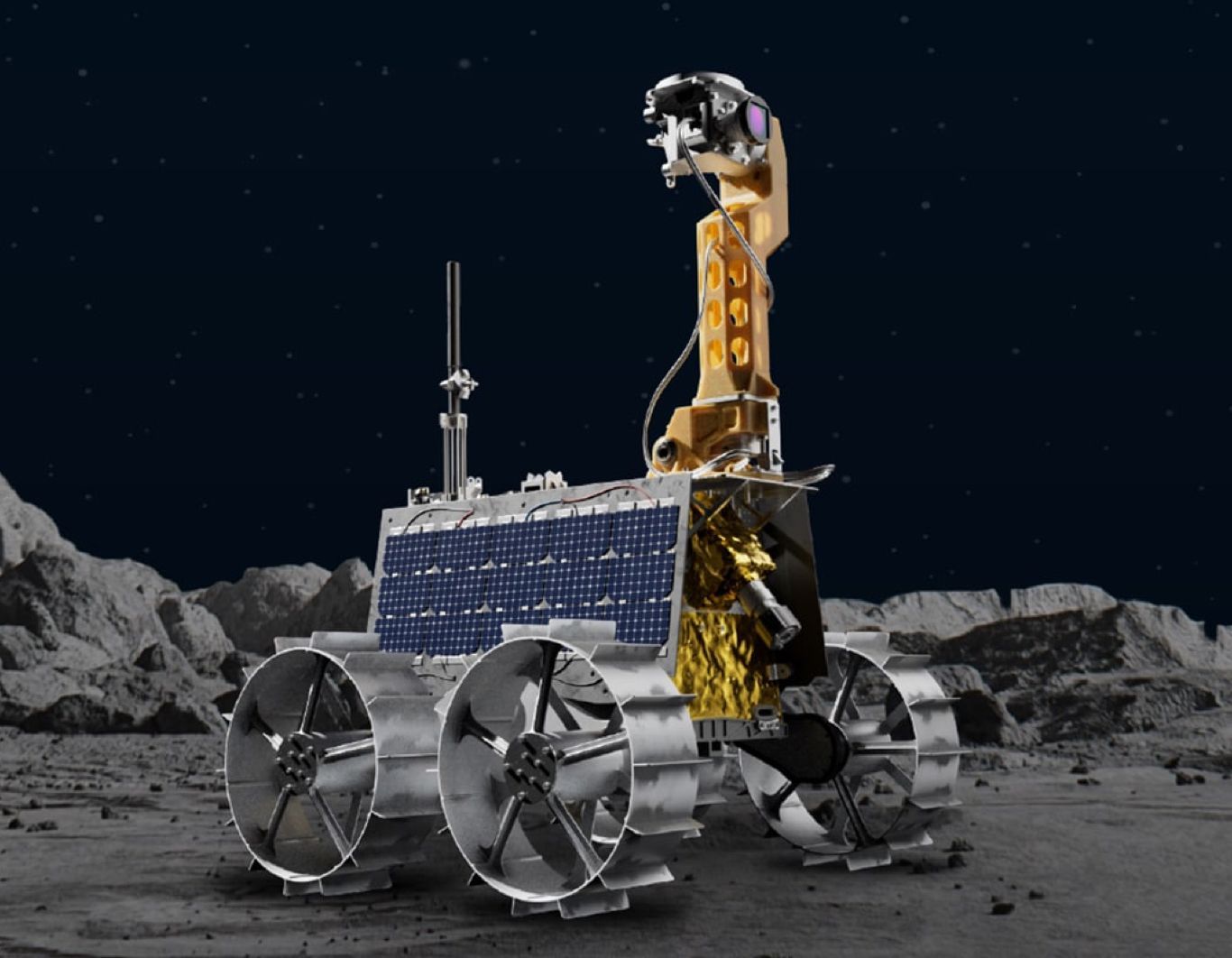
UAE's Rashid lunar rover (Image: MBRSC)
Eyes on the Moon for new and established space leaders
On March 20th Japanese lunar lander company iSpace announced that its HAKUTO-R lander had entered lunar orbit, as part of their 3 month-long journey to become the first successful commercial lunar lander mission. They will now aim for a landing on the surface by the end of April, and once down, will carry out the first commercial transaction on the Moon, and release payloads such as the UAE’s Rashid Rover. As the UAE become one of the latest nations to enter the lunar market
Australia have also built on plans for their own lunar mission. Under the Moon to Mars initiative, the AROSE consortium and the EPE and Lunar Outpost Oceania consortium will receive funding as part of a project to design prototypes of a semi-autonomous rover. In partnership with NASA, the rover is slated to launch by 2026. NASA are also officially constructing their Artemis Moon Rover, the Volatiles Investigating Polar Exploration Rover (VIPER), and is due to be launched with Astrobotic (US) by mid 2024.
China are also developing their lunar plans, and according to Global Times, scientists have revealed plans for the ILRS (International Lunar Research Station) project, which includes studying the Moon’s evolution, exploration of star formation and attempt to make use of lunar resources including minerals and solar energy. While lunar exploration could open-up exciting possibilities, it is the latter point, regarding mineral utilisation, which still raises many questions; about the legality of using resources, and how to avoid conflict when sourcing them. This will become increasingly pressing as more stakeholders take notice and become involved in their own lunar exploration projects. This week, for example, the Indian Space Research Organisation (ISRO) have been discussing a possible future lunar mission with Japan (JAXA), and have also played out a timeframe for their own Chandrayaan-3 mission, which will send a lander and rover to the lunar surface in mid-2023.
The UK are also cementing their role as a leading newer space nation, and this week Rolls-Royce received funding from the UK Space Agency to research how nuclear power might be utilised for a future Moon base, using a micro-reactor. Interestingly, John Kelly, Rolls Royce President, Middle East, has said that the company engaged with the UAE Space Agency on the Micro-Reactor programme. Partnership between the two nations would also be rather symbolic of how New Space is taking shape.
As the US moves further away from China and Russia, their roles (especially the UAE) may also become pivotal in building relations between adversaries and resolving disputes in space. The UAE was appearing to be already bridging the gap between the US and China by working with both SpaceX for the launch of their Rashid rover, and had also planned to send their Rashid 2 rover as part of China’s Chang’e-7 mission. However, on Friday it was reported that US law may prohibit the UAE from working with China on this mission. The US 1976 International Traffic in Arms Regulations (ITAR) prohibits US-built widgets from being launched aboard Chinese rockets, and Rashid 2 would violate this law. According to Interesting Engineering critics have called for these laws to be revised, but considering the state of relations between the US and China at the moment, it’s difficult to see how. One has to question whether this will force new space nations to ‘choose sides’, or if there is still a place for an International mediator to keep the peace in space. One thing is for certain, and that is that space is quickly becoming politicised.
The space industry has proven how it can innovate, solve problems and increase access to space, even during trying times. A bottleneck in launches may pose problems, but can also provide opportunities for new launch suppliers. Similarly, lunar exploration and commercialisation of the Moon presents opportunities, and this week has witnessed just that, for new and established space nations. However, one significant matter remains outstanding, and that is our capability to govern our success. This week we have seen great achievements in technology, but little in legislation and governance.
External Links
This Week
*News articles posted here are not property of ANASDA GmbH and belong to their respected owners. Postings here are external links only.
Our future in space

Can Starship help fix the launch bottleneck? (Image: SpaceX)
24 March 2023
Can industry fix a launch bottleneck, and what next for lunar exploration? - Space News Roundup
It’s rarely a quiet week in the space industry, and this one has been no different, as the world continues to wake up to the possibilities of New Space. There is growing demand in the launch market, but also concerns about how that demand will be met. Also, there are signs of continued and growing interest in sustained lunar exploration, not only from established space nations, but also new players such as the UK and UAE. The New Space economy is expanding all the time.
India and Taiwan have taken steps towards jointly nurturing their space industries, with India’s SatCom Industry Research Association and Taiwan’s Technology Research Institute collaborating to build a common platform for both countries. The International SpaceTech Startup Support Programme is designed to allow Indian startups to present their technologies and work with the Taiwanese space sector. Similarly, this week a US business delegation has been visiting Vietnam, looking to secure future business opportunities. Among the names of the 50 plus companies in the delegation were Boeing, Lockheed Martin and SpaceX, with the latter reportedly looking to expand their Starlink services in Vietnam
It will be interesting to see how new relationships such as these are formed, in the backdrop of shifting international relations, with established space powers perhaps striving to attract the attention of budding space nations. Nonetheless, despite geopolitical challenges, the space economy remains remarkably upbeat, for now at least.
High demand for launch, but delivery slow to come
One of the most symbolic indicators of the continuing success of New Space are launches. Demand remains high and is set to increase in the coming years, with large contracts already signed for projects such as Amazon’s Kuiper megaconstellation. However, there are persistent concerns about meeting this increased demand, and how a launch bottleneck could stifle confidence and industry growth.
Speaking at the recent Satellite 2023 conference, Tim Ellis, chief executive of Relativity Space said that “Almost every company that we talk to is worried about medium to heavy lift,”. Adding to this, Tory Bruno, chief executive of ULA said that “There is now, for the first time in 30 years, a global shortage of launch capacity.” There are several reasons why this bottleneck has occurred, including; severing ties with Russia, and the delays in the anticipated launches of new rockets, such as Blue Origin’s New Glenn.
However, there also appears to be reason to remain optimistic. On Wednesday, Relativity Space launched their highly anticipated, largely 3D printed, Terran-1 rocket. The demonstration wasn’t entirely successful, with the second stage failing to reach orbit. However, the first stage did detach as planned, and Relativity will be able to take away plenty of valuable data. Also, Elon Musk has recently tweeted that "SpaceX will be ready to launch Starship in a few weeks…” Both Starship and Relativity’s Terran rockets promise to be game-changing technologies.
Additionally, SpaceX believe that they can also increase their capabilities through the efficiency and reusability of their Falcon 9 boosters. Tom Ochinero, SVP/commercial business at SpaceX, has claimed that due to their three launchpads, and booster reusability, the company has the capacity to launch up 200 times per year, double what they are estimating for this year. This could go a long way to meet demand.
However, European nations remain focussed on developing their own sovereign launch capabilities, and on March 14th, Arianespace signed a contract to launch payloads for the Italian government, in a show of support for their troubled Vega C launch vehicle. Vega C is designed to replace the earlier Vega rocket and deliver increased payload capacity and improved competitiveness. As well, the UK may appears to be building on its plans on becoming a hub of launch activity. This week it was announced that Spirit AeroSystems, Inc (US) and Astraius Ltd (UK) will collaborate to build on satellite launch services from Prestwick spaceport in Scotland. The proposed technique requires carrying the rocket out to sea using an aircraft, and then releasing it, whereupon the rockets own boosters ignite and carry the payload into orbit. Several companies are lining-up in order to launch from the UK, including Rocket Factory Augsburg (Germany), Skyrora (UK) and Orbex (UK).
Virgin Orbit are another Uk launch operator, and have already carried out a failed launch attempt in Cornwall in January. This came on top of cashflow worries published at the end of 2022, and this week the struggling launch provider announced that they halted operations in order to address financial concerns. It was reported on Wednesday that the company is nearing a $200 million investment deal from venture firm Matthew Brown.
The launch market suffering with its own setbacks and bottlenecks, but one thing is clear, and this is that demand is there. For new launch startups it could be a very exciting few years ahead, but for companies facing delays of their inaugural launches, they will be feeling the heat from competition.
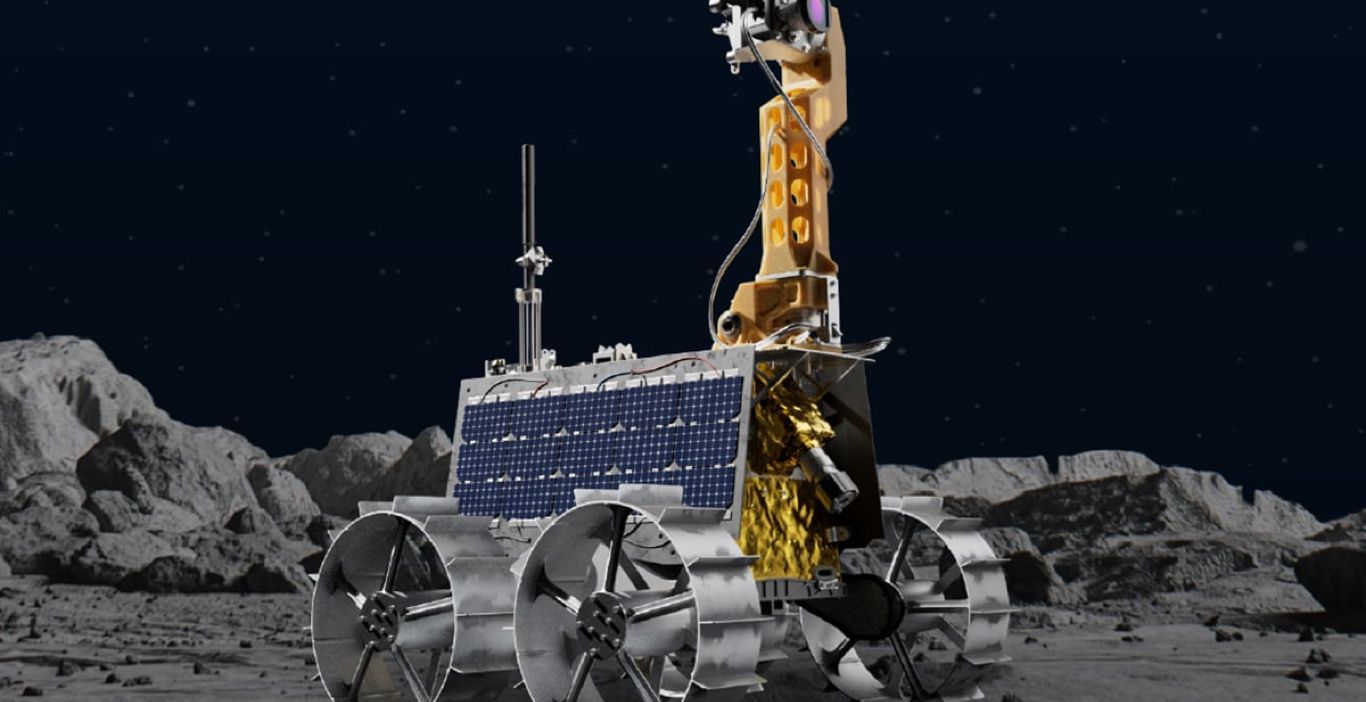
UAE's Rashid lunar rover (Image: MBRSC)
Eyes on the Moon for new and established space leaders
On March 20th Japanese lunar lander company iSpace announced that its HAKUTO-R lander had entered lunar orbit, as part of their 3 month-long journey to become the first successful commercial lunar lander mission. They will now aim for a landing on the surface by the end of April, and once down, will carry out the first commercial transaction on the Moon, and release payloads such as the UAE’s Rashid Rover. As the UAE become one of the latest nations to enter the lunar market.
Australia have also built on plans for their own lunar mission. Under the Moon to Mars initiative, the AROSE consortium and the EPE and Lunar Outpost Oceania consortium will receive funding as part of a project to design prototypes of a semi-autonomous rover. In partnership with NASA, the rover is slated to launch by 2026. NASA are also officially constructing their Artemis Moon Rover, the Volatiles Investigating Polar Exploration Rover (VIPER), and is due to be launched with Astrobotic (US) by mid 2024.
China are also developing their lunar plans, and according to Global Times, scientists have revealed plans for the ILRS (International Lunar Research Station) project, which includes studying the Moon’s evolution, exploration of star formation and attempt to make use of lunar resources including minerals and solar energy. While lunar exploration could open-up exciting possibilities, it is the latter point, regarding mineral utilisation, which still raises many questions; about the legality of using resources, and how to avoid conflict when sourcing them. This will become increasingly pressing as more stakeholders take notice and become involved in their own lunar exploration projects. This week, for example, the Indian Space Research Organisation (ISRO) have been discussing a possible future lunar mission with Japan (JAXA), and have also played out a timeframe for their own Chandrayaan-3 mission, which will send a lander and rover to the lunar surface in mid-2023.
The UK are also cementing their role as a leading newer space nation, and this week Rolls-Royce received funding from the UK Space Agency to research how nuclear power might be utilised for a future Moon base, using a micro-reactor. Interestingly, John Kelly, Rolls Royce President, Middle East, has said that the company engaged with the UAE Space Agency on the Micro-Reactor programme. Partnership between the two nations would also be rather symbolic of how New Space is taking shape.
As the US moves further away from China and Russia, their roles (especially the UAE) may also become pivotal in building relations between adversaries and resolving disputes in space. The UAE was appearing to be already bridging the gap between the US and China by working with both SpaceX for the launch of their Rashid rover, and had also planned to send their Rashid 2 rover as part of China’s Chang’e-7 mission. However, on Friday it was reported that US law may prohibit the UAE from working with China on this mission. The US 1976 International Traffic in Arms Regulations (ITAR) prohibits US-built widgets from being launched aboard Chinese rockets, and Rashid 2 would violate this law. According to Interesting Engineering critics have called for these laws to be revised, but considering the state of relations between the US and China at the moment, it’s difficult to see how. One has to question whether this will force new space nations to ‘choose sides’, or if there is still a place for an International mediator to keep the peace in space. One thing is for certain, and that is that space is quickly becoming politicised.
The space industry has proven how it can innovate, solve problems and increase access to space, even during trying times. A bottleneck in launches may pose problems, but can also provide opportunities for new launch suppliers. Similarly, lunar exploration and commercialisation of the Moon presents opportunities, and this week has witnessed just that, for new and established space nations. However, one significant matter remains outstanding, and that is our capability to govern our success. This week we have seen great achievements in technology, but little in legislation and governance.
Share this article
External Links
This Week
*News articles posted here are not property of ANASDA GmbH and belong to their respected owners. Postings here are external links only.
24 March 2023
Can industry fix a launch bottleneck, and what next for lunar exploration? - Space News Roundup
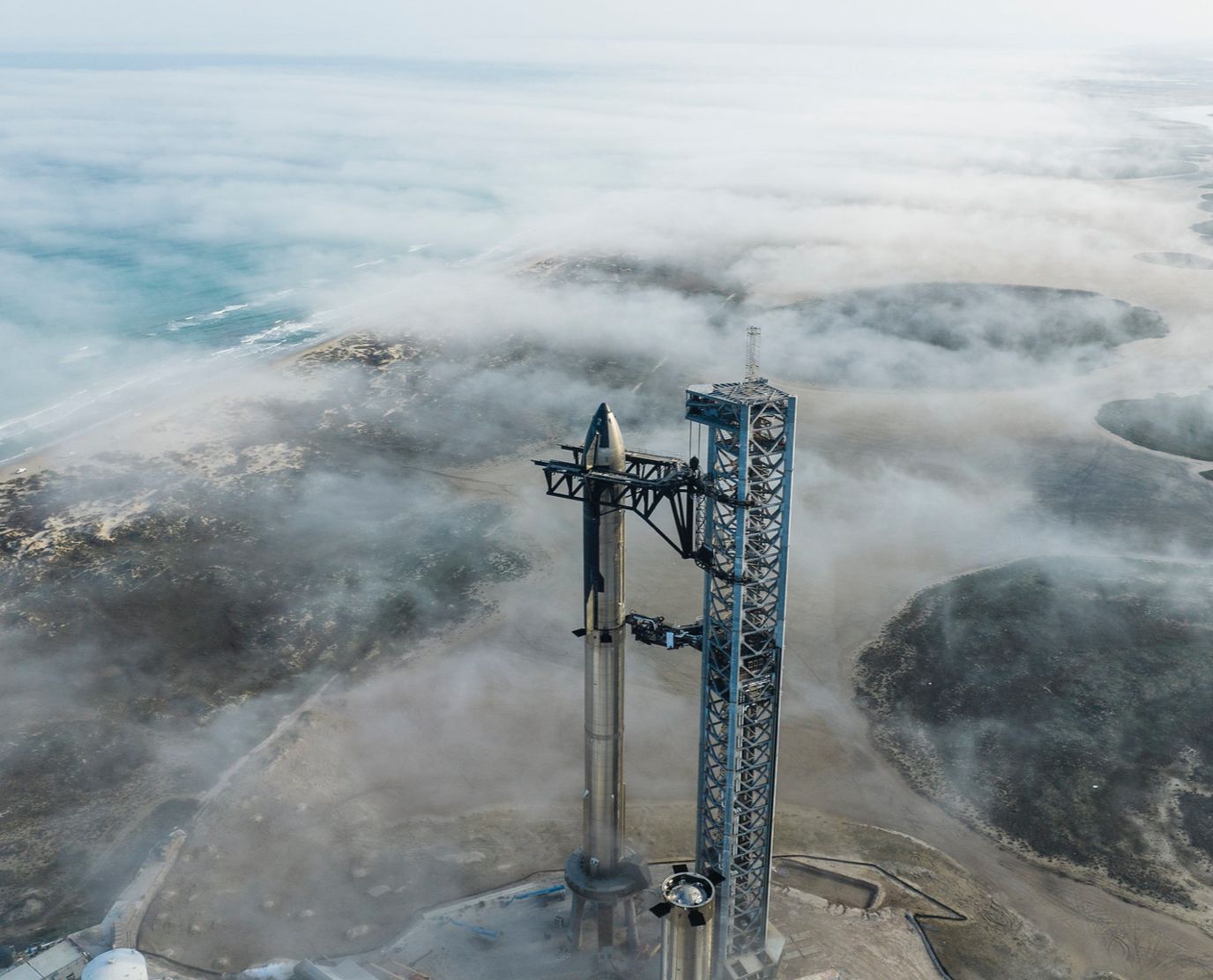
Can Starship help fix the launch bottleneck? (Image: SpaceX)
It’s rarely a quiet week in the space industry, and this one has been no different, as the world continues to wake up to the possibilities of New Space. There is growing demand in the launch market, but also concerns about how that demand will be met. Also, there are signs of continued and growing interest in sustained lunar exploration, not only from established space nations, but also new players such as the UK and UAE. The New Space economy is expanding all the time.
India and Taiwan have taken steps towards jointly nurturing their space industries, with India’s SatCom Industry Research Association and Taiwan’s Technology Research Institute collaborating to build a common platform for both countries. The International SpaceTech Startup Support Programme is designed to allow Indian startups to present their technologies and work with the Taiwanese space sector. Similarly, this week a US business delegation has been visiting Vietnam, looking to secure future business opportunities. Among the names of the 50 plus companies in the delegation were Boeing, Lockheed Martin and SpaceX, with the latter reportedly looking to expand their Starlink services in Vietnam
It will be interesting to see how new relationships such as these are formed, in the backdrop of shifting international relations, with established space powers perhaps striving to attract the attention of budding space nations. Nonetheless, despite geopolitical challenges, the space economy remains remarkably upbeat, for now at least.
High demand for launch, but delivery slow to come
One of the most symbolic indicators of the continuing success of New Space are launches. Demand remains high and is set to increase in the coming years, with large contracts already signed for projects such as Amazon’s Kuiper megaconstellation. However, there are persistent concerns about meeting this increased demand, and how a launch bottleneck could stifle confidence and industry growth.
Speaking at the recent Satellite 2023 conference, Tim Ellis, chief executive of Relativity Space said that “Almost every company that we talk to is worried about medium to heavy lift,”. Adding to this, Tory Bruno, chief executive of ULA said that “There is now, for the first time in 30 years, a global shortage of launch capacity.” There are several reasons why this bottleneck has occurred, including; severing ties with Russia, and the delays in the anticipated launches of new rockets, such as Blue Origin’s New Glenn.
However, there also appears to be reason to remain optimistic. On Wednesday, Relativity Space launched their highly anticipated, largely 3D printed, Terran-1 rocket. The demonstration wasn’t entirely successful, with the second stage failing to reach orbit. However, the first stage did detach as planned, and Relativity will be able to take away plenty of valuable data. Also, Elon Musk has recently tweeted that "SpaceX will be ready to launch Starship in a few weeks…” Both Starship and Relativity’s Terran rockets promise to be game-changing technologies.
Additionally, SpaceX believe that they can also increase their capabilities through the efficiency and reusability of their Falcon 9 boosters. Tom Ochinero, SVP/commercial business at SpaceX, has claimed that due to their three launchpads, and booster reusability, the company has the capacity to launch up 200 times per year, double what they are estimating for this year. This could go a long way to meet demand.
However, European nations remain focussed on developing their own sovereign launch capabilities, and on March 14th, Arianespace signed a contract to launch payloads for the Italian government, in a show of support for their troubled Vega C launch vehicle. Vega C is designed to replace the earlier Vega rocket and deliver increased payload capacity and improved competitiveness. As well, the UK may appears to be building on its plans on becoming a hub of launch activity. This week it was announced that Spirit AeroSystems, Inc (US) and Astraius Ltd (UK) will collaborate to build on satellite launch services from Prestwick spaceport in Scotland. The proposed technique requires carrying the rocket out to sea using an aircraft, and then releasing it, whereupon the rockets own boosters ignite and carry the payload into orbit. Several companies are lining-up in order to launch from the UK, including Rocket Factory Augsburg (Germany), Skyrora (UK) and Orbex (UK).
Virgin Orbit are another Uk launch operator, and have already carried out a failed launch attempt in Cornwall in January. This came on top of cashflow worries published at the end of 2022, and this week the struggling launch provider announced that they halted operations in order to address financial concerns. It was reported on Wednesday that the company is nearing a $200 million investment deal from venture firm Matthew Brown.
The launch market suffering with its own setbacks and bottlenecks, but one thing is clear, and this is that demand is there. For new launch startups it could be a very exciting few years ahead, but for companies facing delays of their inaugural launches, they will be feeling the heat from competition.
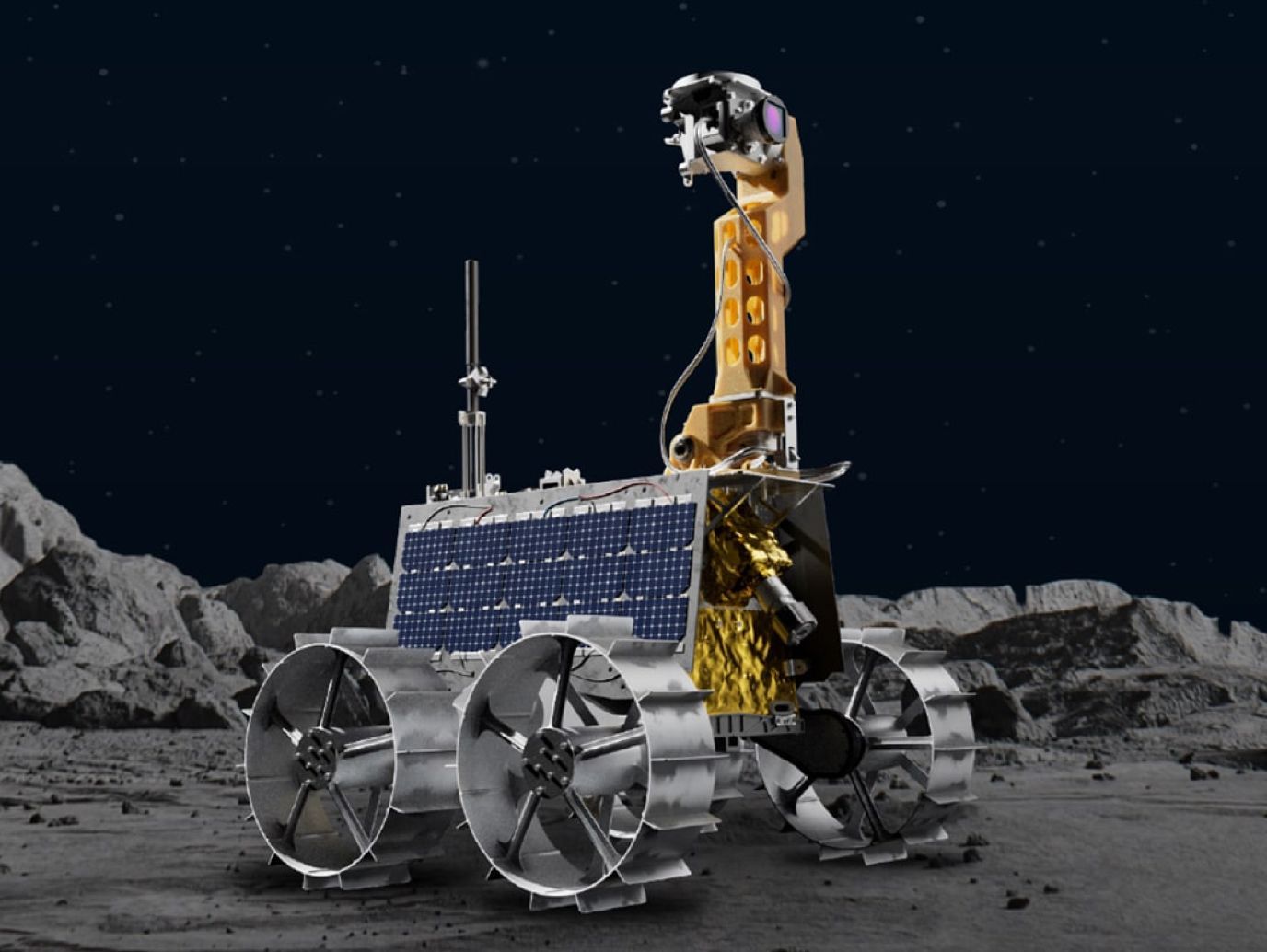
UAE's Rashid lunar rover (Image: MBRSC)
Eyes on the Moon for new and established space leaders
On March 20th Japanese lunar lander company iSpace announced that its HAKUTO-R lander had entered lunar orbit, as part of their 3 month-long journey to become the first successful commercial lunar lander mission. They will now aim for a landing on the surface by the end of April, and once down, will carry out the first commercial transaction on the Moon, and release payloads such as the UAE’s Rashid Rover. As the UAE become one of the latest nations to enter the lunar market
Australia have also built on plans for their own lunar mission. Under the Moon to Mars initiative, the AROSE consortium and the EPE and Lunar Outpost Oceania consortium will receive funding as part of a project to design prototypes of a semi-autonomous rover. In partnership with NASA, the rover is slated to launch by 2026. NASA are also officially constructing their Artemis Moon Rover, the Volatiles Investigating Polar Exploration Rover (VIPER), and is due to be launched with Astrobotic (US) by mid 2024.
China are also developing their lunar plans, and according to Global Times, scientists have revealed plans for the ILRS (International Lunar Research Station) project, which includes studying the Moon’s evolution, exploration of star formation and attempt to make use of lunar resources including minerals and solar energy. While lunar exploration could open-up exciting possibilities, it is the latter point, regarding mineral utilisation, which still raises many questions; about the legality of using resources, and how to avoid conflict when sourcing them. This will become increasingly pressing as more stakeholders take notice and become involved in their own lunar exploration projects. This week, for example, the Indian Space Research Organisation (ISRO) have been discussing a possible future lunar mission with Japan (JAXA), and have also played out a timeframe for their own Chandrayaan-3 mission, which will send a lander and rover to the lunar surface in mid-2023.
The UK are also cementing their role as a leading newer space nation, and this week Rolls-Royce received funding from the UK Space Agency to research how nuclear power might be utilised for a future Moon base, using a micro-reactor. Interestingly, John Kelly, Rolls Royce President, Middle East, has said that the company engaged with the UAE Space Agency on the Micro-Reactor programme. Partnership between the two nations would also be rather symbolic of how New Space is taking shape.
As the US moves further away from China and Russia, their roles (especially the UAE) may also become pivotal in building relations between adversaries and resolving disputes in space. The UAE was appearing to be already bridging the gap between the US and China by working with both SpaceX for the launch of their Rashid rover, and had also planned to send their Rashid 2 rover as part of China’s Chang’e-7 mission. However, on Friday it was reported that US law may prohibit the UAE from working with China on this mission. The US 1976 International Traffic in Arms Regulations (ITAR) prohibits US-built widgets from being launched aboard Chinese rockets, and Rashid 2 would violate this law. According to Interesting Engineering critics have called for these laws to be revised, but considering the state of relations between the US and China at the moment, it’s difficult to see how. One has to question whether this will force new space nations to ‘choose sides’, or if there is still a place for an International mediator to keep the peace in space. One thing is for certain, and that is that space is quickly becoming politicised.
The space industry has proven how it can innovate, solve problems and increase access to space, even during trying times. A bottleneck in launches may pose problems, but can also provide opportunities for new launch suppliers. Similarly, lunar exploration and commercialisation of the Moon presents opportunities, and this week has witnessed just that, for new and established space nations. However, one significant matter remains outstanding, and that is our capability to govern our success. This week we have seen great achievements in technology, but little in legislation and governance.
Share this article
External Links
This Week
*News articles posted here are not property of ANASDA GmbH and belong to their respected owners. Postings here are external links only.




























